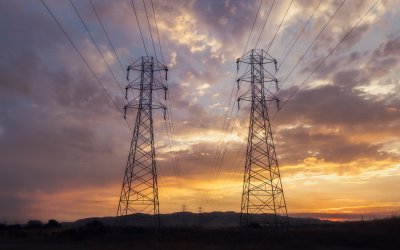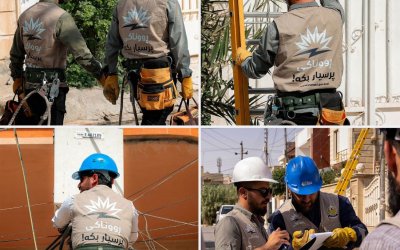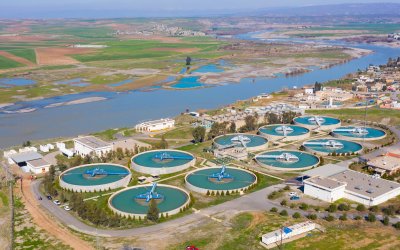Introduction
Every year as summer approaches, or whenever the U. S. waivers for the imports of Iranian electricity and gas come for renewal, or if the prospect of a change in U.S. policy is raised, the subject of addressing Iraq’s electricity shortages is revisited with almost the same set of proposed solutions. Most are focused on replacing Iranian gas imports of by domestic gas sources through greater capturing of flared gas, or by gas imports from other sources such as pipeline imports from Turkmenistan, or Liquid Natural Gas (LNG) imports from Qatar; as well the direct sourcing of electricity such as imports from Jordan, Turkey and the GCC; and finally, the use of renewables such as solar energy.
Each of these solutions can play a meaningful part in addressing the country’s electricity shortages. However, the approach employed so far has major shortcomings, in that it mostly aims to close the current power supply-demand gap and is anchored by a simplistic approach to energy independence that is predominantly viewed from the prism of the U.S. -Iran conflict. Moreover, it fails to address the essential deficiencies of Iraq’s power grid, compounded by a failure to appreciate that the supply-demand gap, stemming from these deficiencies, is increasing. This is made worse by not considering the long-term demand drivers arising from population growth, the reconstruction of the country after decades of conflict, and from increased domestic consumption patterns.
This paper aims to unpack Iraq’s power conundrum first by reviewing the deficiencies of its power grid and the long-term demand drivers that need to be taken into consideration; and then argues that the above solutions should be built upon to become interconnected parts of an integrated overall long-term strategy, in other words a multifactorial approach and not the current scattershot set of solutions. An upcoming companion paper will take a deeper dive into a subset of the current analysis.
Notes on data:
• The terms electricity and power are used interchangeably. The data for electricity are for Iraq excluding the Kurdistan Region of Iraq (KRI), as these are based on data provided by federal Iraqi authorities, in particular the Ministry of Electricity (MoE), that do not include the KRI in their reports.
• It should be emphasized that the data for gas and electricity are annual figures, and thus represent average consumption, production and export for any given year – encompassing the extreme peak summer period where each is substantially higher than the average.
• Electricity capacity, production and demand is measured in gigawatts (GW)[1], while electricity generation, and consumption over time is measured in terawatt-hours (TWh)[2]. The relationship between the two, is that 1 GW generation (or consumption) for 24 hours a day for 365 days generates (or consumes) 8.76 TWh a year.
• Figures are rounded for ease of reading, and thus might not add up fully.
The Power grid’s structural and financing deficiencies
Understanding the deficiencies of Iraq’s power grid requires examining its components consisting of the power plants that generate electricity, the transmission systems that transport this electricity to population centers; and the distribution networks which then distribute this electricity to end users. The prior decades of conflict, rolling dysfunction of successive governments, coupled with poor maintenance negatively affected all three aspects of the grid. These are further exacerbated by mismanagement, lack of coordination between ministries, and the county’s corrosive corruption.
These start with the generation stage with a huge gap between nameplate capacity, i.e. the maximum sustainable power output under ideal conditions, and effective capacity, i.e., actual output. A gap always exists between these two, but in Iraq it is significantly larger than elsewhere in the region. In 2023, the nameplate capacity was 40.6 gigawatts (GW)[3], more than enough to meet demand estimated at 22.7 GW, but effective capacity throughout the year was a mere 17.9 GW, i.e. only 44.2% of nameplate capacity was effectively used for generating electricity. The main reasons include: (1) the lack of appropriate fuel supply, in particular gas, which leads to substitutions by crude or heavy fuel oil with the result that generating plants run at much less than capacity; (2) poor maintenance; and (3) poor provision of cooling facilities to prevent generating plants’ overheating. Thus, a nameplate-effective capacity gap of 22.6 GW, leads to supply-demand gap of 4.7 GW.
The prior decades of conflict, rolling dysfunction of successive governments, coupled with poor maintenance negatively affected all three aspects of the grid. These are further exacerbated by mismanagement, lack of coordination between ministries, and the county’s corrosive corruption.
This gap is widened significantly by electricity losses due to the deficiencies of the transmission systems and the distribution networks, in that the electricity generated does not mean that it was actually delivered to end users due to substantial losses during the delivery process, with the distribution networks accounting for the bulk of these losses. Two primary reasons account for such losses, while natural and common, yet both are significantly higher than for regional peers. The first is technical losses due to age and poor maintenance. The second is non-technical losses, or electricity consumed but not metered and thus not billed. This due to theft, faulty meters, and meter tampering among others–estimates for these vary between a third [4] to two-thirds [5] of total losses. In 2023, the effective generated electricity of 17.9 GW produced 157.2 TWh, but only 63.9 TWh was delivered end users and billed, for a loss of 59.3% (Figure 1). Therefore, the supply-demand gap of 4.7 GW has widened to 15.4 GW; or to 10.7 GW under the assumption that non-technical losses account for a third of total losses.
Figure 1: Electricity: generated, delivered, and losses 2010-2023
Sources: Ministry of Electricity annual reports 2010-2023, available at: https://moelc.gov.iq/?page=2879
For consumers, the electricity supply-demand gap is mostly met by a combination of demand suppression, and by electricity sourced from neighborhood generators [6] which have grown over the years, operate with subsidized fuel and are noisy, polluting, and expensive.
The grid’s structural deficiencies are compounded by its high costs and low revenue generation, with the gap between the two increasing, which places increasingly high demands on the federal budget and in the process risks the grid and the budget’s fiscal sustainability. Direct operating costs [7], such as MoE’s operating budget, electricity purchases from independent power producers (IPP), electricity and gas imports, domestic fuel usage, and so on, are often more than 10-times larger than revenues generated from electricity sales. These costs are increased further by non-direct costs arising from the provision of domestic gas, crude, and fuel oil at highly subsidized fixed prices. The substantial losses during the transmission and distribution stages (Figure 1), mean that only a small portion of the electricity generated is billed, 40.6% in 2023; and the sector’s poor collection history means that about half of what is billed is collected. Therefore, collected revenues based on electricity consumption tariffs, that are uncommercial to start with, do not cover the grid’s costs. As such the generation and delivery of electricity needs continued financing to cover the revenue-cost shortfall, as well as for needed investment in the grid, both of which are covered by the federal budget, in the process increasing federal expenditures.
Finally, the gird’s structural and financing deficiencies are amplified by long-term demand drivers. The first of which is population growth of 2.3%, followed by increased demand for electricity stemming from the reconstruction activity following decades of conflict, in particular the current large-scale housing developments encompassing new communities, mixed-use developments, and high-rise buildings. While, the third driver is increased electricity consumption as the country’s stability takes hold and domestic consumption patterns begin to catch up with those of peers in the region. The delivery of electricity to end users, as measured by kilowatt hours (KWh) per capita [8], shows that domestic consumption in 2022 recovered to 1995 levels, and is about a half the average of peers in 2022 (Figure 2) underscoring the potential catch-up over-time and thus increased long-term electricity demand.
Figure 2: Delivery of electricity per-capita
Source: World Bank, data as of 2022, available at: https://data.worldbank.org/indicator/EG.USE.ELEC.KH.PC?locations=IQ-1A-ZQ-XP
Closing the Gap
The growing electricity supply-demand gap means that the goal posts are continuously moving for bridging this gap and, as such, ensuring reliable electricity supply and achieving energy security, is a long-term process based on a multifactorial approach to the power conundrum. Such an approach should encompass power generation, transmission and distribution, as well as their fiscal sustainability by addressing the structural and financing deficiencies of the power grid. These should take place along three broad areas: the first and the one that receives most attention is power generations, followed by power delivery, and the grid’s fiscal sustainability.
Power generation covers direct electricity imports, installing additional generating capacity, upgrading existing generating capacity, and securing fuel sources for electricity generation- especially gas, followed by solar energy. Direct electricity imports include those from neighboring countries, and within Iraq from the KRI. In the early 2000s, these were predominately from Iran, followed by small amounts from Turkey and the KRI. Imports from Iran started in 2004, peaked at 0.94 GW in 2012, and by the end of 2023 declined to 0.36 GW as a consequence of Iran’s shortcomings [9] in meeting its domestic demand [10]. Imports from the KRI started in 2013 at 0.29 GW and by 2023 were 0.42 GW; however they have been uneven. Imports from Turkey ended in 2016 at 0.27 GW. Diversification into other regional suppliers, started in late 2018, with the signing of a memorandum of understanding with Jordan to establish an electrical interconnection network for the import of 0.15-0.20 GW beginning in September 2020 [11]. In early March 2024 imports began starting with 0.04 GW that eventually would grow to 0.15-0.20 GW. Additionally, an agreement was signed in late-2019 with the Gulf Cooperation Council Interconnection Authority (GCCIA) for an initial 0.50 GW to be imported from Kuwait rising to 1.90 GW over subsequent years through building a common power grid, with implementation expected in 2025 [12]. Other agreements signed, but not implemented yet, are with Turkey [13] for the supply of 0.60 GW, and with Saudi Arabia for initial imports of 0.40 GW that will eventually reach 2.00 GW [14]. This collection of separate projects should be developed into an integrated project that links Iraq’s power grid into the GCC’s regional power grid [15] by addressing the considerable technical challenges involved in integrating national grids.
Electricity imports from the KRI should be combined with gas imports from the KRI, as part of a long-term resolution to the twin interlinked conflicts over the KRI’s share of the federal budget, and over the development of the country’s oil and gas resources through a federal oil and gas law. Ultimately electricity imports from the region have a ceiling on potential supply, as all these countries share the same peak-demand during summer months, thus limiting export availability.
The government’s plans for generating capacity include 15 GW in new capacity, and 13 GW from current capacity through efficiency enhancements [16]. However, considerable work needs to be undertaken to move these plans beyond the aspirational stage, to secure sustainable funding, and crucially to secure the needed fuel, in particular gas, for power generation. Domestic sourcing of additional gas supplies falls into three categories. The first is capturing all flared gas such as the expansion plans of the Basra Gas Company, and the deal with Total Energies which includes capturing flared gas [17]. The second is accelerating the development of gas focused fields, by resolving the chromic delays in developing these untapped sources [18]. The third is realizing the KRI’s gas potential through a resolution of the issues hindering its development through a federal oil and gas law (above), for the KRI to be in a position to exports about 5.4 billion cubic meters (BCM) of gas a year starting in 2030 [19].
Electricity imports from the KRI should be combined with gas imports from the KRI, as part of a long-term resolution to the twin interlinked conflicts over the KRI’s share of the federal budget, and over the development of the country’s oil and gas resources through a federal oil and gas law.
International sourcing of additional gas supplies takes the form of pipeline gas imports, and LNG imports. Gas pipeline imports started from Iran in 2017[20], which steadily increased until 2020 peaking at 10.3 BCM, before decreasing to 7.9 BCM by the end of 2024 due to Iran’s shortcomings in meeting its domestic demand. This was followed in 2024 with a deal for pipeline gas imports from Turkmenistan for about 5.5 BCM annually, which is dependent on overcoming geographical and other challenges –as this gas would be exported to Iran [21], after which Iran releases the equivalent amount of gas from its production, to Iraq. Other than Iran, Turkmenistan was the only viable pipeline exporter that had the production and spare capacity to export gas to Iraq, but the geographic and other challenges encountered underscore the difficulty of any other potential pipeline exporter such as Russia or Azerbaijan. Thus, an alternative is LNG imports from Qatar, the U.S., or Australia assuming that they have the spare capacity to meet Iraq’s needs, or from Russia which has spare capacity, but importing and using LNG require significant infrastructure developments[22].
It should be pointed out that securing these alternative gas sources does not negate the need for Iranian gas even though it is declining. Iran’s gas exports of 8.8 BCM in 2023 accounted for 29.0% of generated electricity, while gas imports from the KRI and Turkmenistan, under ideal conditions, could be 10.9 BCM by 2030, or about 23.8% more than imports from Iran in 2023. But by 2030, the supply-demand gap would have increased meaningfully, thus underscoring the need for all sources of gas, including from Iran.
Figure 3: Iranian contributions vs generated electricity
Sources: MoE annual reports 2010-2023: https://moelc.gov.iq/?page=2879 and MoE presentations, Tavanir Holding Company 2016 report: https://policy.asiapacificenergy.org/sites/default/files/Statistical%20Report_red.pdf
Increased domestic and international gas supplies should be complemented by upgrading MoE’s current gas power generating plants from mostly simple-cycle combustion turbines (SCCT) to combined-cycle combustion turbines (CCCT) thereby generating significantly more electricity from the same quantities of gas. While such an upgrade is included in the government’s 13 GW planned current capacity increases, however, this needs to move beyond the planning stages to implementation.
Also needing a move to implementation is solar energy fueled power generation, which is planned to contribute 3.5 GW of the planned 15 GW in new generating capacity [23]. Meanwhile, TotalEnergies, has started building the first phase of a 1.0 GW solar energy plant, with an initial 0.25 GW that would be fully operational by 2028 [24].
Complementing the power generation area is the second area, which receives less attention but is just as essential, which is ensuring the maximum utilization of the power generation provided in the first area. In other words, utilizing the power delivered by new generating capacity, by enhanced existing generating capacity, by new sources of gas and solar energy, and by electricity imports; in order to minimize the losses of up 60% from current transmission systems and distribution grids (Figure 1). However, this requires the government’s planned $11.5 billion medium-term investment in transmission and distribution to move to the immediate term, and implementation, to increase its scope, and to secure sustainable funding[25].
However, implementing the first and second areas would not ensure the sector’s fiscal sustainability, nor would they remove the drain on the budget without embarking on comprehensive reforms of both electricity tariffs, and of the system of fuel and power subsidies. However, this third area, vital as it is, follows on from the country’s post-2003 political economy, and thus is the most difficult to implement[26].
Conclusion
The analysis of the power gird’s structural and financing deficiencies argues that Iraq’s power conundrum is real, and could develop into a full-blown crisis over the coming years if the underlying causes are not addressed with urgency. However, the usual framing of the conundrum, both in diagnosis and in proposed solutions, has been overly simplistic and has not addressed, nor can it address its root causes. The paper argues for a multifactorial approach that encompass the power grid’s spectrum of generation, transmission and distribution, as well as the grid’s fiscal sustainability. However, this is a long-term process with many moving parts, requiring a dedicated, persistent, and long-term commitment by Iraq’s political elite, irrespective of who emerges to form the new government post the upcoming parliamentary elections. Nevertheless, the same scattershot set of solutions for electricity shortages will likely be championed by the political elite to further their chances in these elections. The paper aims to counterbalance any such solutions proposed during the elections, and to frame the public debate within the context of the multifactorial aspects of the conundrum and its solutions – even though the needed commitment from the elite has, so far, been lacking, and expecting it to happen is within the realms of fantasy.
This article will be included in the eleventh edition of the Iraq Economic Review.






